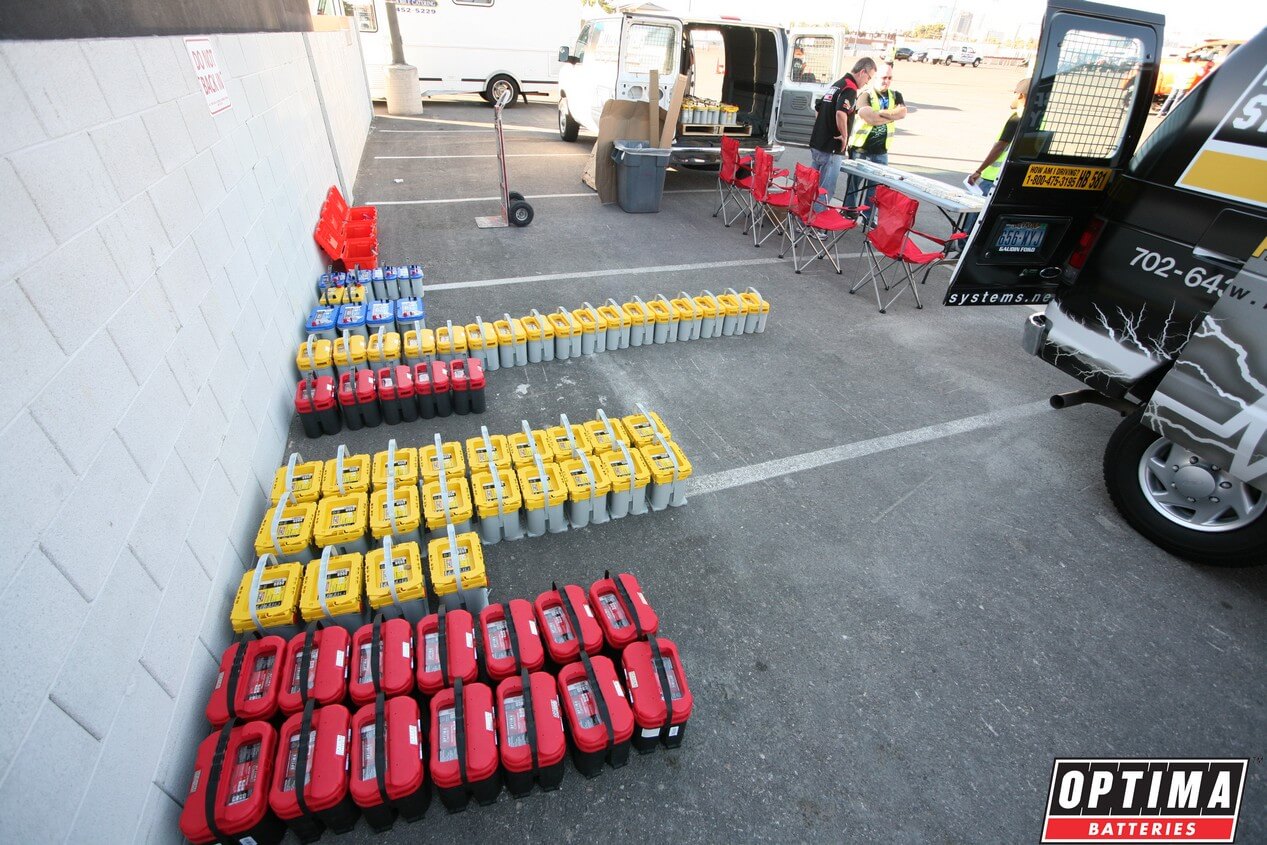Should I Use a REDTOP or YELLOWTOP for Car Audio?

- Sponsor
- OPTIMA Batteries
- Location
- Henderson, Nevada


REDTOP or YELLOWTOP? It's a question many consumers frequently ask, as the colors themselves don't necessarily give any indication as to what applications might suit them best. The answer is actually easier than most folks realize. For the vast majority of automotive applications, a REDTOP will work just fine, as it is an SLI (starting/lighting/ignition) battery, designed and warrantied to get your car started. However, there are some applications, where a YELLOWTOP is a more appropriate battery and we'll give some examples here.
If a vehicle is significantly modified from an electrical standpoint in any way, a YELLOWTOP is probably a better option. That would definitely include car audio applications, where large amps & speakers are added, as well as vehicles with other significant electrical accessories, like winches, snowplows, CB radios, auxiliary lighting, etc... Why would those accessories be better-suited for a YELLOWTOP?
YELLOWTOP batteries are designed & warrantied for starting and deep-cycle use. While many consumers (and battery brands) focus on starting power (CCA), a YELLOWTOP battery will actually offer slightly fewer cranking amps, while offering slightly more reserve capacity (Ah), than a comparably-sized REDTOP. YELLOWTOPs are also designed to be significantly discharged and recharged over and over again, while a starting battery like a REDTOP, works better and lasts longer when it is kept as close to a full state of charge (~12.6-12.8V) as possible.
There are even some instances where vehicles that are stock or very close to it might be better off using a YELLOWTOP. One example would be a minivan that spends a lot of time parked at the soccer fields. One kid watches videos on the van's entertainment system, while the other practices or plays games. By definition, that van's battery is being used in a deep-cycle application, because the video is consuming energy not from the van's charging system, but directly from the battery itself.
Another example would be a newer vehicle that doesn't get used on a daily basis and is equipped with satellite-based navigation/tracking systems. You know the systems we're talking about- they can find your car if it gets stolen or you can press a button and get driving directions from wherever you are. Sometimes these vehicles are just used as weekend fun cars, so the owners keep the keys in the car. Some of the more sophisticated vehicles will begin activating various operating systems in preparation for starting, when they sense the key fob getting close to the vehicle.
These vehicles can consume a significant amount of energy, even while they are parked and not in use, so a quality battery maintenance device would be a worthwhile investment on those vehicles (and shielding the keys from the vehicle may not be a bad idea either). Vehicles that have aftermarket car alarms also tend to use far more energy when the vehicle is parked, than those without. As such, if a vehicle is going to sit for an extended period of time and a battery maintenance device is not an option, fully-charging and completely disconnecting the battery is also a viable option and can also be a very effective anti-theft measure.
Even if a vehicle doesn't completely discharge it's battery while sitting or being used with the engine off, it's likely that the battery will be significantly discharged and will place a tremendous strain on the vehicle's charging system, once the vehicle finally is restarted. Our friends at Powermaster include a very clear warning on their boxes- The alternator isn't designed to charge a dead battery. Premature alternator failure can occur and may Void Your Warranty.
Whatever your application, make sure you address your weakest electrical link and if you find yourself shopping for a battery and know your vehicle will be used in a deep-cycle application, make sure you choose an OPTIMA YELLOWTOP.
